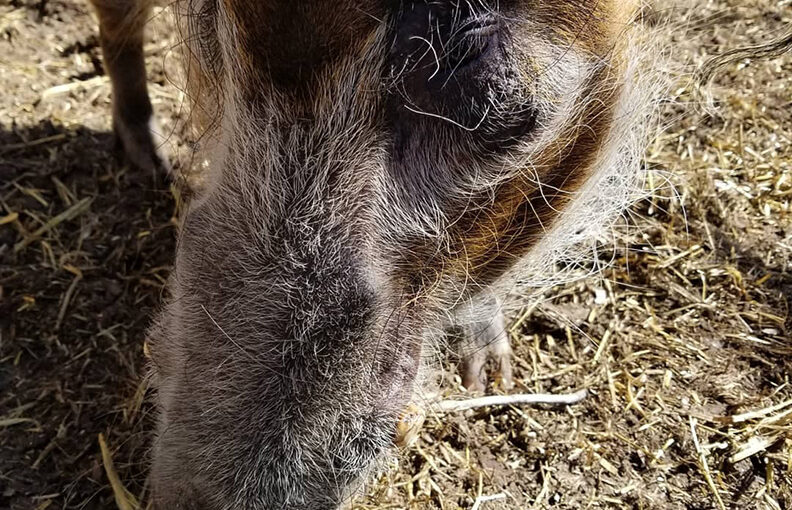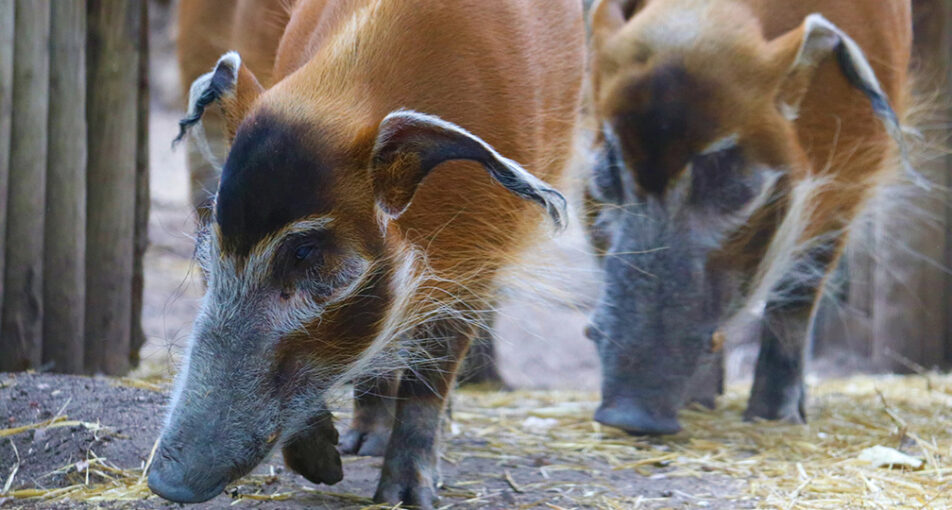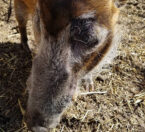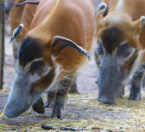The powerful bodies and long snouts of these hogs make it easy to forage for root-type vegetables. They are omnivores, eating both meat and plants, and use their outstanding snout to locate and uncover food.
Classification
| CLASS: | Mammalia |
| ORDER: | Cetartiodactyla |
| FAMILY: | Suidae |
| GENUS: | Potamochoerus |
| SPECIES: | porcus |
Habitat & Range
Red river hogs inhabit thickets, forests, savannas and swamps.
They are found throughout western and central Africa. They are also known as bush pigs.
Location


Adaptations
- Red river hogs are fast runners and good swimmers.
- With their heads lowered to the ground they are able to break through the thickets like a wedge.
- They have foot glands that mark their tracks.
- They have a good sense of smell to locate and uncover food.
- They establish their territories by marking trees with their long canine teeth.
Physical Description
- The red river hog can range from 3 feet to 3 ½ feet (100-150 cm) in length.
- Their body is round and supported by short, sturdy legs.
- Their tail is 1 foot to 1 ½ feet (30-45 cm) long and hairless except for the tuft of hair at the end.
- They weigh 99-264 pounds (45-120kg).
- They have a shaggy red coat with black and white contrasting markings on their head, a white eye ring and long white ear tassels.
- They have a white mane that runs the length of their spine and stands up when the animal is excited or threatened.
- They have barely visible small upper tusks and visible lower tusks which can be up to 3 inches (7 cm) long.
- The males have a long snout covered in warts and ridges -often hidden by bushy facial hair.
Diet
What Does It Eat?
In the wild:
Grasses, water plants, roots, bulbs, fruit, carrion, small animals
At the zoo:
Various grains, greens, vegetables, cooked sweet potato, and fruit (but no citrus)
What Eats It?
They are hunted by leopard, lion, spotted hyena, python and humans.
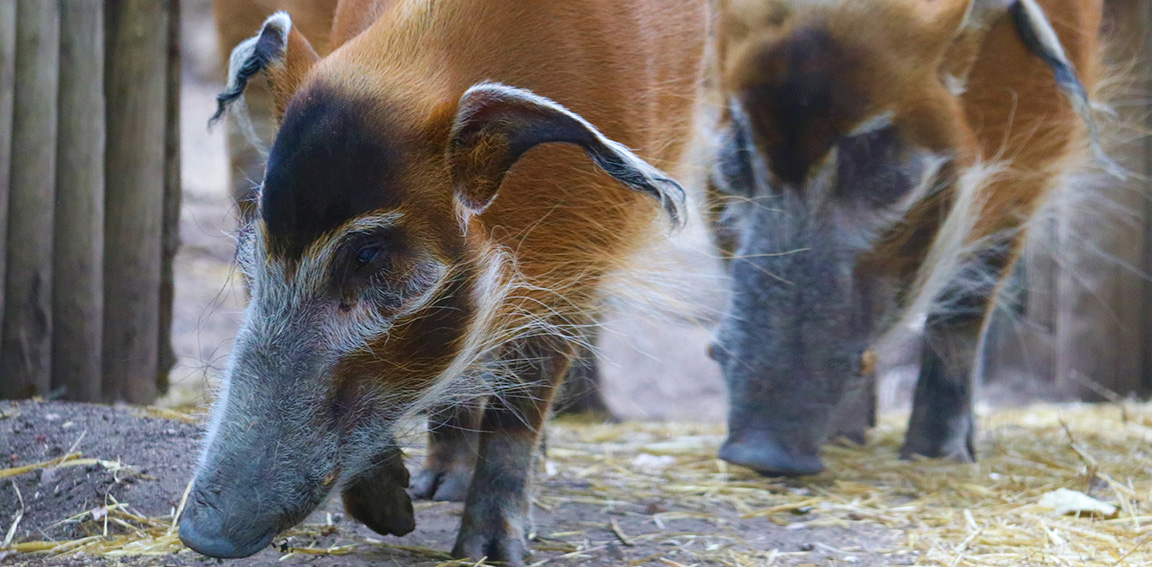
Social Organization
They live in groups – called sounders, that consist of 2-15 females and young, attended by a male.
Life Cycle
Red river hogs breed seasonally so that the young are born between the end of the dry season in February and the midpoint of the rainy season in July. Gestation lasts 120 days. The mother constructs a nest from dead leaves and dry grass before giving birth to a litter of up to six piglets with three or four piglets being most common. The piglets weigh 23 to 32 oz at birth and are initially dark brown with yellowish trips and spots. They are weaned in about four months and develop the plain reddish adult coat by around six months. The dark facial markings do not appear until they reach adulthood at around two years of age. Red river hogs live up to 20 years.
